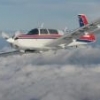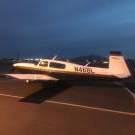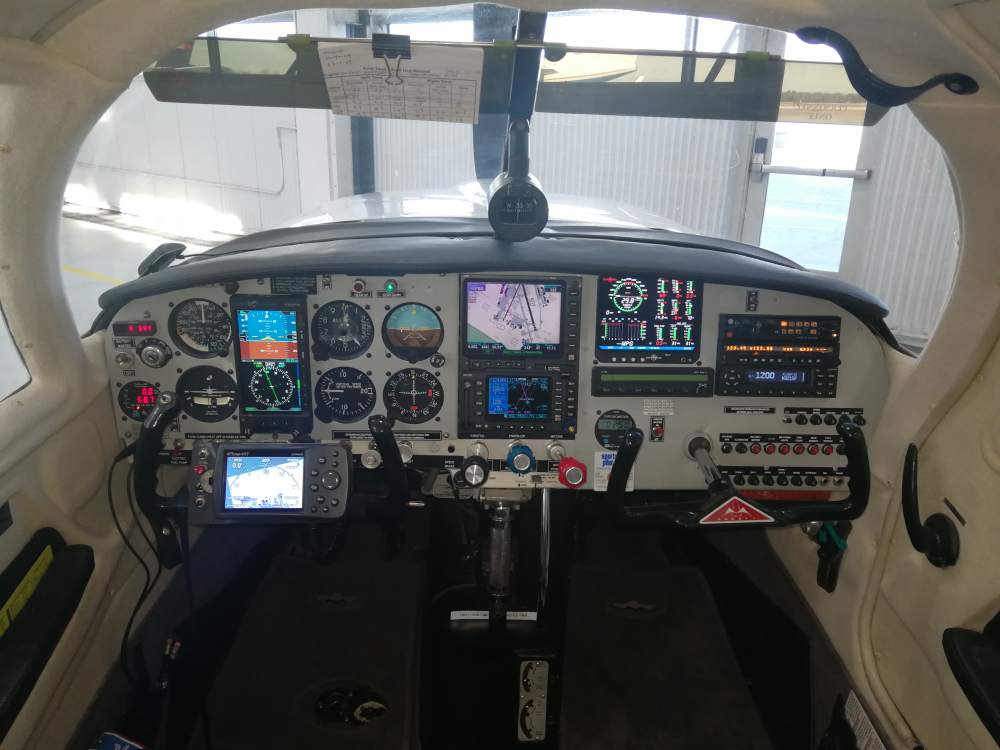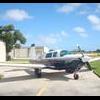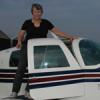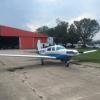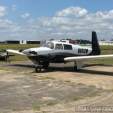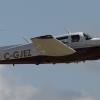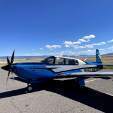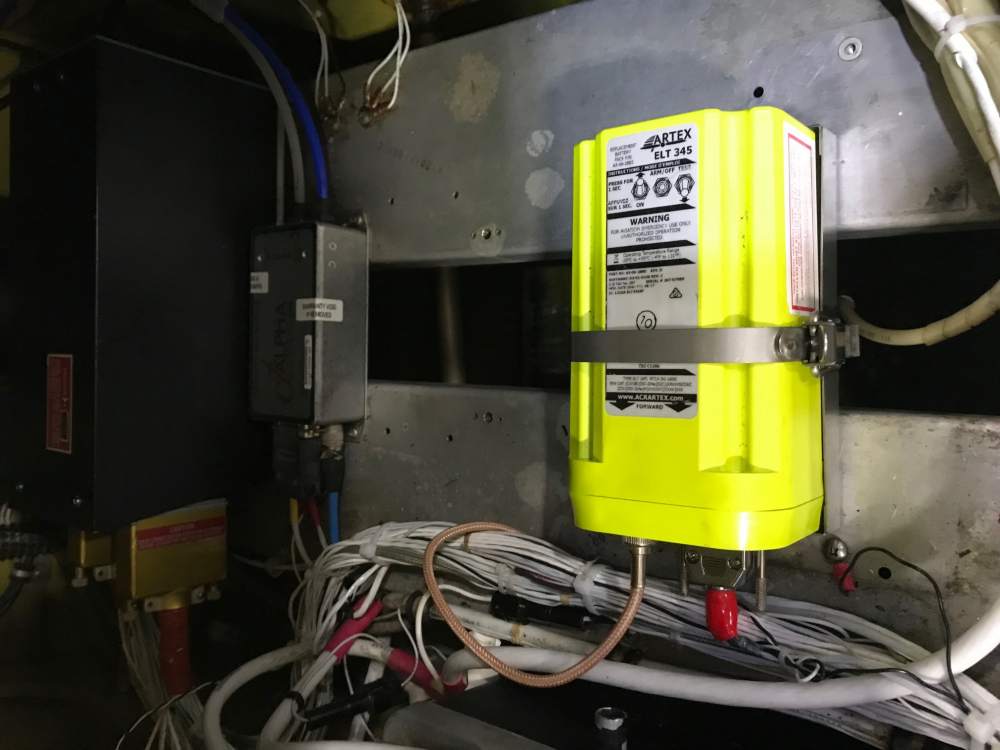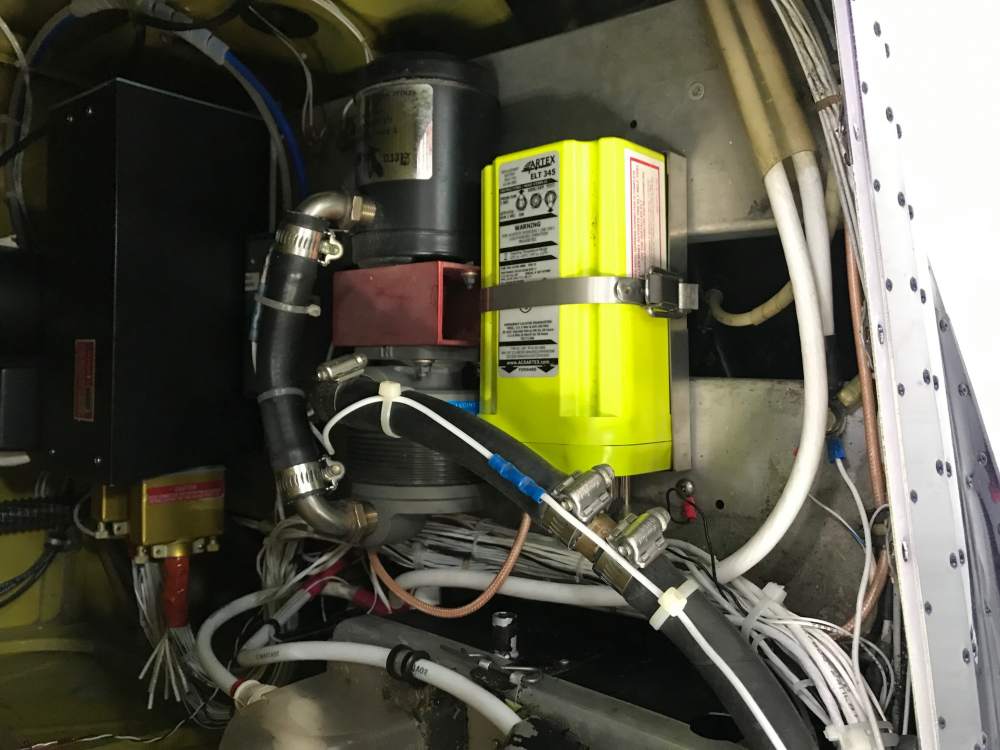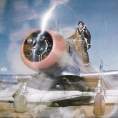Leaderboard
Popular Content
Showing content with the highest reputation on 05/28/2021 in all areas
-
if the engine was overhauled in the 90s I seriously doubt you have 7/16 valves. If it is indeed a narrow deck case, I would call both Divco and Crankcase Services of Tulsa. Explain your predicament and ask for their recommendations.3 points
-
Since I’m an aviator and a musician, I figure this little funny would classify as aviation related humor IMG_3435.MP42 points
-
Hi Guys, I think several folks are taking to intent of my article wrongly, it could also be the way I was writing or stating it. I am not a writer and I apologize for the "Lack Luster" writing. When you spend 33 years demonstrating Mooney aircraft to people who unintentionally try to kill you, ya tend to pick up a few things along the way. Of course the Mooney slips fine. My comment were intended to be a risk mitigation measure and are congruent with Bob Cromer's comments on the subject. Fuel at ports is also a factor Blah, Blah, Blah........etc....etc.. Have a great weekend everyone !!!! Richard A. Simile www.thunderbirdaircraft.com2 points
-
2018 - 10% drop in premium after getting more M20TN time. 2019 - No Change in premium. 2020 - 4% increase in premium. 2021 - 5% increase in premium. USAIG for the last 20 years.2 points
-
And this is why not just anyone should design systems. Prior to AWS second outage we were laughing about 3 servers and 2 availability zones on the east and one on the west coast. Then it happened. We only lost one server but the site stayed up. So that said is when I read about chaos monkeys and designing to fail. https://netflixtechblog.com/5-lessons-weve-learned-using-aws-1f2a28588e4c2 points
-
2 points
-
I removed a functioning wing leveler 3 years ago because the trutrak was "right around the corner". Word to the wise. Don't plan for this to materialize.2 points
-
I am starting to wonder here if this whole thing is genuine. I don't know Mike Bush other than by reputation, but I know Don. And the kind of troubleshooting the OP describes, would any mechanic really do this? Run an obviously propstriked engine after 7 years of not running just like that? Nobody I know would. Does this story simply pull all the strings to get us excited? Maybe a bit too much hook line and sinker?2 points
-
Yes, I have the same issue sometimes and it often occurs when you’re given a SID or STAR clearance while already “inside” the geographical boundaries of the procedure so it makes no sense to fly to a transition. You can usually pick any transition and then go direct to the waypoint that was the one they gave you in the clearance.1 point
-
Yes, I was the Rocket owner. The lock plates were not bent over when engine was assembled by Continental. It failed at 80 hours. Continental paid Rocket to R&R the engine so they could fix it. The gear came loose and destroyed the alternator sending FOD into the engine. I was IFR above a solid cloud deck just out of Jackson Hole for Spokane.1 point
-
1. I am not concerned over the $500 upgrade from a JPI EDM930 (early serial number) to a JPI EDM930 (newer serial number). That seems very reasonable. 2. For those who are *really* into this, note that even the older firmware goes into a higher sample rate mode of 1 sps (up from 1 sample per 6 seconds) during LeanFind operations. 3. The upgraded unit does have better color display, updated firmware and a higher sample rate capability... along with the increase in dimensions of the frame. The upgraded display is what causes the small increase in dimension. 4. It is just my bad luck that the JPI EDM unit in my panel layout is right up against the structural member of the aircraft frame. The “201 style” windshield mods, cowling mods, turbo mods, etc., all come into play. 5. Below are pictures of Casper’s (N3215F) panel. I really love it as is! I suspect moving the Avionics switch, the autopilot and the EDM930 downward in a new layout would solve the dimensional problem with the EDM930 “upgrade”, but I do not judge it to be worthwhile... yet. Especially after gaining a “0 SMOH” entry in my engine log book less than a year ago! 6. My experiences with Tech Support at JPI is not the worst I have experienced in the industry. (I reserve that title for a vacuum-powered HSI manufacturer.) Definitely “mid-range” though. ‘Nuf said, as I am sure they are trying their best. 7. I should stop whining... life is pretty darn good as is. panel.1 point
-
An easier to find is an o-320 150 hp case. If I remember correctly they are identical. jerry1 point
-
In 2017 my J was involved in an incident which required a major repair to the wing, on both sides. When the shop that was doing the repair was able to locate a wing from a K model, I got all excited because I'd have larger tanks - but it wasn't meant to be. While it's a simple mechanical process to connect the fuselage from a J to a K wing, the FAA didn't quite see it that way. The shop said that a DER would be required to come up with drawings and all kinds of analysis for the switch, and that the process would not be cheap. While it seems simple enough to do, there are factors involved such as the fuel gauges as well as W&B issues, among other things. In the end, the shop removed sections of the K wing and placed them on the damaged one. Four years later, the plane still flies better than it did before the incident.1 point
-
I just landed yesterday at KALN, for a long weekend with the world’s best grandsons and their parents, who live in Edwardsville. Had planned to land at SET, but that was suddenly a very bad idea, with orange and lavender radar returns over it. We will be headed back east on Tuesday, so if you can get away midday then, you’d be welcome to consider the merits of a Mooney 20S Screaming Eagle. Except for its thirst, it is a wonderful traveling machine. Fast, comfortable, excellent UL, lots of room for baggage. I love mine. It might be a handful for a freshly-fledged pilot, but maybe worth saving your nickels for when you’re comfortable, and instrument rated.1 point
-
The 1/2" refers to the valve stem diameter. It's one or the other, not both. That was all changed to increase the TBO, valve stems wore then broke. 1/2" fixed that. I had a Cherokee 40 years ago, Changed out the cylinders before we got it. I'd be shocked to hear you had anything but 1/2" valves. While I had the Cherokee, a mechanic from nearby Gastonia flew into Wilgrove in their Cherokee 140. Leaving it broke a valve. He and his father were replacing the cylinder a couple days later and told me they were going to get it home and overhaul to get rid of the 7/16" valves.1 point
-
A temp of three degrees above ambient I woudnt worry about. To start with your assuming both temp indicators are dead nuts accurate, and that’s not always the case. ‘Obviously another variable is when comparing to other aircraft is the carb wide open? the more it’s closed, the more of a cooling effect you will have, plus again is their temp indicators dead nuts accurate? On edit, look at your temps when its been in the hanger overnight, that should give a good idea if they both indicate the same or not.1 point
-
Very interesting - was your arm and weight the same as shown in the table above from smwash02? BTW yes it is for removal of the entire installation1 point
-
Normal cruise mixture. Burn off 30 gallons then plug the actual fuel used, the JPI fuel used into the formula1 point
-
Before our panel job, we had a very old 930 that was starting to fail intermittently. We chose to remove it and go with the 500TXi, and for redundancy, kept the factory RPM and MP gauges on the far right side of the panel. Thing I like most about it is having your EIS right in front of you on the 500TXi. Your entire scan is within that 10" frame. Great for approaches and changing power settings while in the soup or under the hood. It's a very clean setup and I would do it that way again.1 point
-
dominikos, I admire your faith, but it sounds as if you are just now boarding the train. A month or so ago someone posted on this forum that King told them it would be certified in May. Now you have been told it would be certified in June. As much as I hope this is correct, in August or September of 2018 I stood across a trade show table from the TruTrak guy. He looked straight into my eyes and said “ it will be certified for Mooney aircraft next month.” They have continued to kick this can down the road for over 2 1/2 years. I remember my Grandfather teaching me “it’s always your last chance when you’re making a first impression.” In the case of these people their first impression was good, but a few months later after looking me in the eye and telling me a falsehood, it faded away. The impression has gotten worse with every time they have made the same old worn out claim and it still doesn’t come true. I was counting on what they told me to be true and here we are over 2 1/2 years later and still nothing. I just hate to see you make plans based on this happening and then being sorely disappointed as I and many others have been.1 point
-
I have a 201 wing complete from a 1978 M20J with bladders, complete and traceable serial #24-0458. Eldon 780-975-8598 location Edmonton Alberta1 point
-
https://www.ergotron.com/en-us/ These guys will have something that will work for you. Just think your payload instead of a monitor.1 point
-
I called Dmax and talked to him when I had my gear acting up. He told me they have the switches available and change a few out each year. Not sure where they get them...1 point
-
Ok, ok, I guess my cars have cool little shiny caps too. One of them has the shiny stem covers too.1 point
-
make sure that you drill an oversize hole to allow for expansion and contraction of the plastic around the metal screw. If you were to install a snug fastener in a small hole, thermal expansion will cause it to crack. Same logic applies to how tight you torque the fastener, the plastic needs to be able to move. Be sure to round all edges as plastic is very susceptible to stress fracture. There is lots of info on this subject on line. do all your work with film or paper covering the plastic and only remove it when your done to reduce scratches. I made my replacement ovation lenses by buying sheet stock and bending and trimming it using the old lens as a pattern.1 point
-
How much has the plane been flown in the last year? I'm a believer in recent, and consistent, use. My F had 2100 hours when I bought it nearly 4 years ago; 300 hours later and it's still running great. It was flown multiple times per month, over 100 hours/year, for a decade. I think you have a good opportunity here1 point
-
The last time I had a cracked case repaired I did the same as you and it was about $5000 to me. I will be a bit more now. DIVCO is about $1200 and Nickson’s is about $1500. I would do Nickson’s.1 point
-
This is a quote for one of my limit switches from a junkyard, yes it’s ridiculous, Yes I’m sure I can do better, but junkyard electrical parts are not my idea of a parts source, but Mooney apparently doesn’t support their aircraft, which is too bad, because there is money in parts, actually a lot of money. Assumption is that they can’t they can’t afford to, and if that’s the case, that doesn’t bode well. Mooney parts just don’t exist it seems. I’m seriously considering selling my Mooney and getting a Bonanza or something that you can at least get parts for. ‘I’ve not been able to get one single part that I have called and checked on, not a single part. So while I don’t want to be cleaning switches, but paying 100 times what a switch should cost from a junkyard for a switch that may not be any better than mine isn’t a viable parts solution. I can get just about any part ai want for my 75 yr old Cessna and not from Cessna, but Univair and others, I wonder why they don’t start producing Mooney parts?1 point
-
Switch contacts are usually plated with silver to resist corrosion and lower contact resistance. They are designed with a wiping action that keeps them clean of minor tarnish. What kills them is moisture and wear. Once the thin plating wears through, the base metal tends to oxidize easily. Contact cleaner may get them going again, but expect the effect to be temporary and require repeated applications.1 point
-
What are you lubricating the switches with? You really don’t want any kind of lubrication. You want to clean the contacts and ideally remove any oxidation. ‘This stuff is pricy compared to most contact cleaners, but it’s more than a cleaner, it removes oxidation, and really seems to work. My gear intermittent extension problem ended up being the panel switch. thankfully so far the deoxit has solved the issue, good thing because limit switches are not available from Mooney. or at least the ones for my 81 model are not. If yours won’t come up, if it’s a limit switch it’s the up limit switch if I understand the system, that switch needs to be closed to allow power to the relay, when the gear go up the switch is opened removing the power of course. I’d start with cleaning the panel switch as that way you don’t have to take anything apart. Spray above the lever with the switch down, and under it with it up, follow directions on the can. If that doesn’t fix it, move to the limit switches.1 point
-
The stratux with a ahrs module will also send data to a tablet. So seperate but redundant both in power source and ahrs1 point
-
I didn’t see this mentioned above, but the Garmin EIS will display on an iPad running Garmin Pilot. So theoretically if the LCD crapped out on either a G3X or a G500txi, you could still see engine instruments on your iPad.1 point
-
Ooof, you have a good partner if she still talks to you after that!1 point
-
Correct about the 7/16 valve stems and 1200 TBO. Vast majority were upgraded to 1/2" decades ago. At worst it would have been done 2 years ago when it was topped.1 point
-
Informed people don't run little plastic caps. I have always run metal caps on the cars/ trailers.1 point
-
Is this an original fixed gear, fixed prop D? Or was it modified back in the day with retractable gear and constant speed prop? I believe only 3 unmodified planes remain.1 point
-
1 point
-
We can argue about the purpose of a Schraeder valve or the cap all we want. This fact remains. A properly functioning Schrader valve should not leak, and a MS20813 cap in good condition, properly installed should not leak. Together they form a double barrier system and they should be used....together.1 point
-
it bonds to the metal long enough to allow the tappets and cam lobe to break in and seat together. Engine revs have to be high to properly break in the 2 faces initially, as high spring loads will really play havoc on the surfaces if allowed to spend extra time applying pressure at low RPM's. A good engine builder of course knows this and will break in accordingly. This initial break in period is where most significant cam/tappet wear will occur, and a lot of people protect the much cheaper rod bearings at the cam lobe expense. Dry faces anytime isnt good, but especially before they are seated together. Splash lubrication is sub optimal at best, especially with a thick oil that may not flow well until its viscosity thins enough from engine heat. Never mix up a lobe and its tappet when reassembling if torn down. Again, engine assembly 1011 point
-
Glad too. Hopefully, this will save someone from yanking a good running engine for inspection... -Don1 point
-
As has been mentioned I would send them your lenses and they will trim the new ones to them. The drilling is the easy part. Put the new lens in place and use a Sharpie marker to mark a dot where you want to drill. Pull the lens off and use the bit that you buy from them and it's very easy. I use a tinnerman washer so the lens doesn't crack when i put the screw in.1 point
-
Thoughts about the Trutrak have come to b something like “if I were to win the lottery.........? We all need to have our impossible dreams.1 point
-
That is strange for a 76' model. I would really try to empty a tank totally (e.g. fly it to a minimum or wait until fuel pressure drops before switching), then have the rest drained on the ground and refuel to absolute top. That is how much you can get into these tanks. If it's less than 52 USG, then I'd find out why and what can be done about it. Mine is a 65 model and it takes 52 USG. I've been musing about increasing that either via bladders (to 64 USG) or with Monroy tanks (to 88 USG) but the latter are no longer available and as my tanks are perfectly sealed I can't really convince myself to put the bladders just yet. But 12 USG more would be lovely at times. Clearly, if you do not have a fuel flow indicator yet, better a fuel computer, then get one. Guestimating fuel flow from the POH is never very accurate. Combine that with our rather inaccurate fuel gauges and you give away range. As for efficiency: The POH is a bit interesting to read in that regard, you really have to start digging into it to figure out the best settings for range. I've done some work on this a couple of years back and it comes out at rather unexpected values. What I've basically done is to take the max range figures on each power table and feed them into one single table. From there, I recalculated the range via fuel at top of climb and 45'' reserve at the applicable fuel flow. The remaining "cruise fuel" is then divided by the fuel flow to give a range and the distance to climb added. What I found is that max range is achieved at 10'000 ft with 2300 RPM and 17" MP. This results in a fuel flow of 7.8 GPH and 128 KTAS. Almost the same range is achieved with 18" and 8.2 GPH. Still Air Range calculated like this is a little over 700 NM with fuel remaining of 6 USG. I've tried this power setting several times and it works, including the associated TAS (measured with a Shadin FF and the Aspen for TAS). Actually, that is what I aim for to use these days. For those who prefer high speed cruise, best range again is at 10'000 ft, however I find the TAS values in the POH to be optimistic... With full throttle and 2500 RPM the POH gives 10.3 GPH fuel flow and 156 KTAS. With 2300 RPM and full throttle it gives 9.4 GPH and 149KTAS. The range calculated the same way as above is somewhere between 630 and 670 NM with fuel remaining of 7.5 GPH. I have yet to test HSC properly. The POH gives a maximum long range cruise at 1800 RPM and 37-44% power. Fuel flow is around 6 GPH. Speeds however are absymal, between 97 and 108 KTAS. Range in this regime is about 40 NM more than the long range cruise I quoted in the first paragraph, so imho it's not even worth considering, as first of all the gain is minimal and 2ndly sitting 8 hours only to achieve a probably quite academic range increase doesn't make sense. I'd actually wonder if someone has ever tried this 1800 RPM cruise. Some feedback would be interesting. What I'd suggest is to take your POH and start working the same way: Pick out the max range figures per altitude and compile a table which gives you the power settings to achieve that. Then calculate your maximum cruise fuel by deducting your personal final reserve and fuel to climb. Finally add the distance to climb to the cruise distance and you get some pretty usable data. Needless to say I suppose that the calculated range data are significantly smaller than the ones in the POH. I wonder how many folks have run out of fuel because they believed those figures. As also TAS is often quite different, it is also very useful to collect real life data and then adapt your tables with them. Quite possibly also the airplane profiles in your Foreflight or whatever you use for flightplanning. That is what the airlines are doing as well (with fuel bias or similar quotas) and it works really well. That is something I've been wanting to do as well but have not found the time. For cruise regimes not at the top of the spectrum, I found the POH to be quite accurate though.1 point
-
All I can say is that I'm really happy my F came with an STEC already installed. Trouble free for coming up on four years...knock on wood1 point
-
To be honest unless it’s a very low time engine, I’d say your looking at an overhaul. Engine has to be removed and completely taken apart, then the cases sent off, if they can be repaired they will be as good or better than new, but do you put old parts back in? Labor cost wise it’s close to an overhaul.1 point
-
Without an ECU that gives fault codes or other diagnostic information, how else do you test it? Old technology sometimes requires old methodology.1 point
-
Yeah, send me a pm, I can supply and EDM900 for you with a panel to match your old cutout to make this work. Or take JPI's offer and get a nice new EDM930 and find a way to make it fit. I have several Mooney panel templates in my library, I can do a special deal on a new panel for you. Use the opportunity to do some other upgrades too. Sometimes you gotta look at things as 'I got enough mileage out of those old tires'. Its not like you were totally burned like Navworx and Sandia instruments turning into bricks. My MacBook is 7 years old, battery failing, time for a new one. Just hanging in for the next generation.1 point
-
Everything is an issue with the FAA, until or unless through the STC process it’s been shown to cause no harm. ‘I’ve done many EMI/EMC test flights, it’s time consuming but not all that difficult, that and am electrical DER and some paperwork and time and it’s likely you will get your STC. ‘There is something called unintended consequences that the FAA is trying to guard against. ‘Many people think that say an oil additive for example being FAA approved is some kind of acknowledgement that it works or is good etc. and it’s not. All that has been done is to prove that it causes no harm1 point
-
My co-pilot and I started to refurbish the interior of 03L in Sept. 2019. As of May, 2021, I can report that it's more-or-less done. The interior of our '67C was very tired. Ripped upholstery, ripped/dirty/saggy headliner, crazed side/door windows, dingy/frayed carpet, cracked/stained plastic. Here's the result of our final step, installing SCS lightweight carpet with soundproof backing starting during the recent annual when we had the gascolator out. I was looking for a good "before" photo, but I guess I didn't take any - she was in really bad shape cosmetic and I avoided photographing the interior I guess. What a rewarding thing to do for not a huge cost.1 point
-
Things to learn today... One fuel pick-up per tank... Close to the wing root.... In the back corner... Just above the lowest corner of the tank... Pretty much where the fuel sump drain is... If you only have fuel in one tank.... If you Lower that wing in uncoordinated flight... The fuel will run away from the fuel pick-up... Have no fear... You are on short final... With so much excess energy... You are slipping to lose the energy... Having the engine not running is also helping lose the excess energy you have... Returning to wings level, or coordinated flight will have fuel being pumped to the engine in about ten seconds or so... A long 10 seconds on short final when the fan goes silent... PP thoughts only, all stuff I have read around here before... Best regards, -a-1 point


